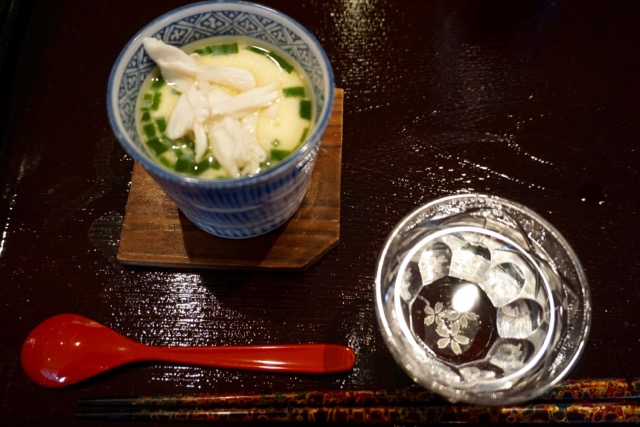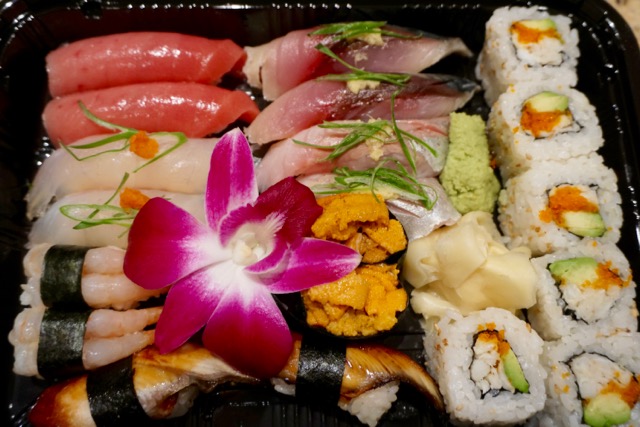Still cold but nicely sunny with blue sky.
As I mentioned, previously we have three cherry trees. The newer tree, which we planted, is quite spectacular in its own right. When in full bloom the branches look like thick bottle brushes of pink cherry blossoms as shown in the picture above. The cherry blossoms on the older trees are more old-fashioned, light pink, delicately ethereal and very elegant as shown in the picture below. The two types of tree usually bloom at slightly different times. This year it was a treat that they bloomed together.
At least, for this hanami I had a chance to go to our regular grocery store and bought a few items to make more hanami drinking snacks. I realized the garlic chives ニラ have emerged in our herb garden. So I made this dish. I did not follow any recipe but it is chicken tenderloin encased in omelet with garlic chives. I served this with green beans sautéed in butter (in the same frying pan I cooked the chicken). On the side, I put ketchup and Sriracha (small amount).
I removed the small tendon/sinew from the top of the tenderloins, seasoned with salt and pepper. I chopped garlic chive I harvested from the herb garden.
I mixed in with a beaten egg.
I dipped the tenderloins in the egg mixture and started frying in butter. I added more egg mixture and I turned the tenderloins over so that the omelet encased the tenderloin. I repeated this process until all the egg mixture was used.
I also made my usual chawanmushi 茶碗蒸しwith crabmeat and garlic chives. I also put in some ginko nuts 銀杏 (from a can), chicken tenderloin thinly sliced against the grain of the meat. We used our cherry blossom cut glass sake cups.
Before steaming the chawanmushi I added the smaller chunks of crabmeat to the egg mixture to be cooked into the custard. After 10 minutes of steaming, when the surface of the custard was cooked enough that the crabmeat would not sink into the custard I added the largest chunks of crabmeat.
While at the market I also got a salmon filet. As usual, I removed the belly portion and made it into a drinking snack. This time I simply seasoned with salt and pepper and pan fried it in butter. I made sure the skin was nicely crispy. I served it with asparagus which were cooked in the same pan.
So we managed to squeeze in one more day of hanami.
























































